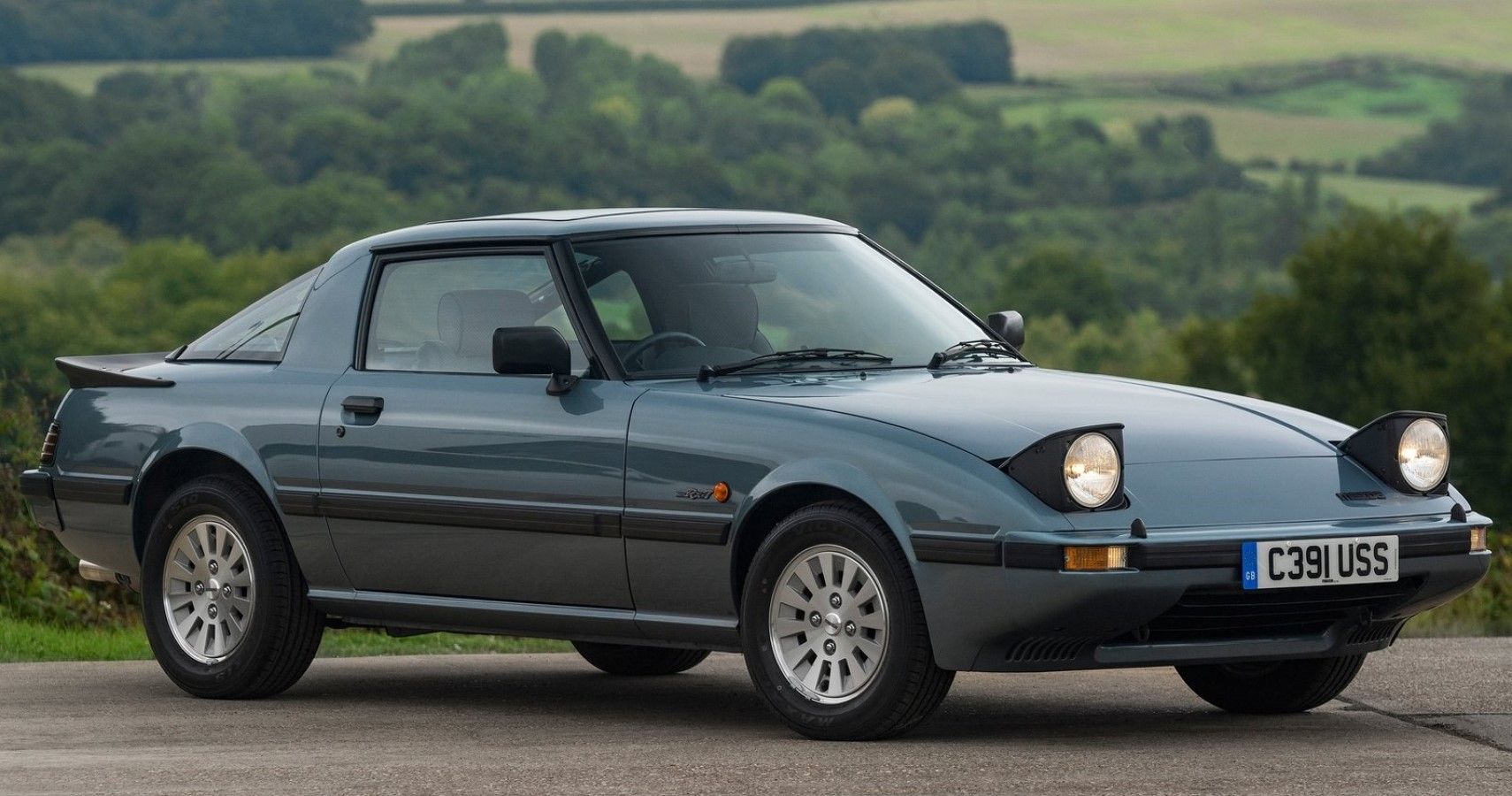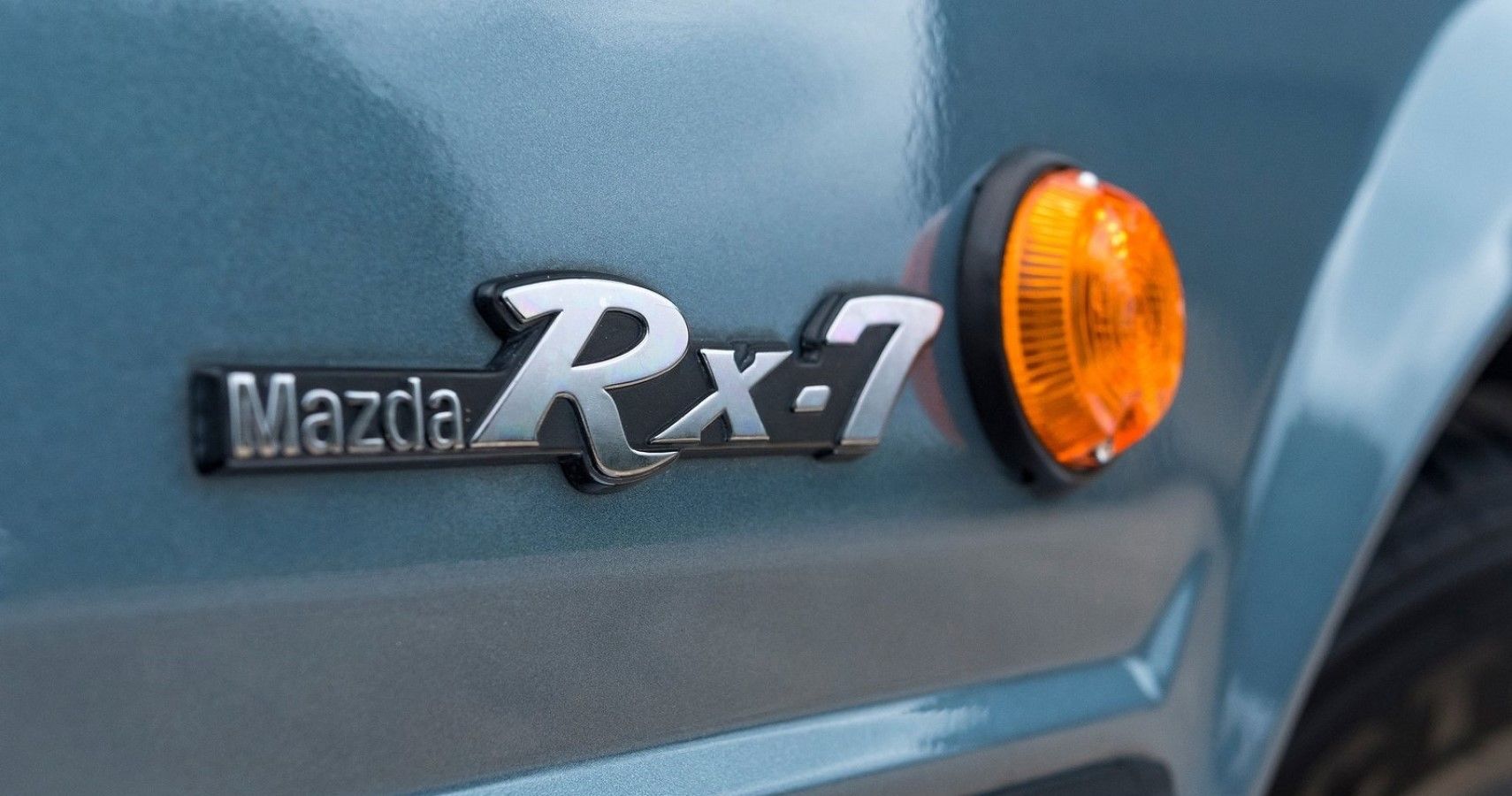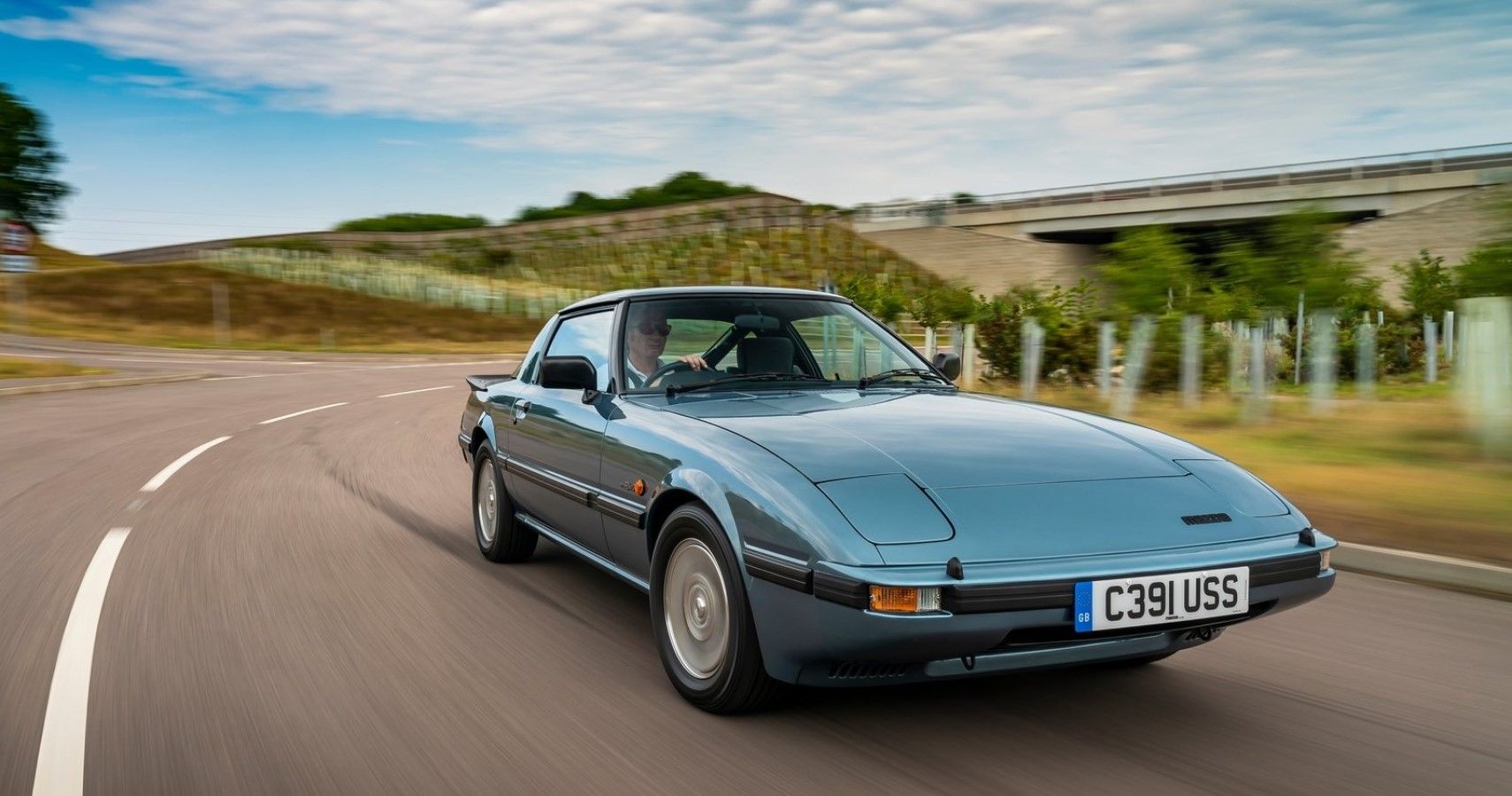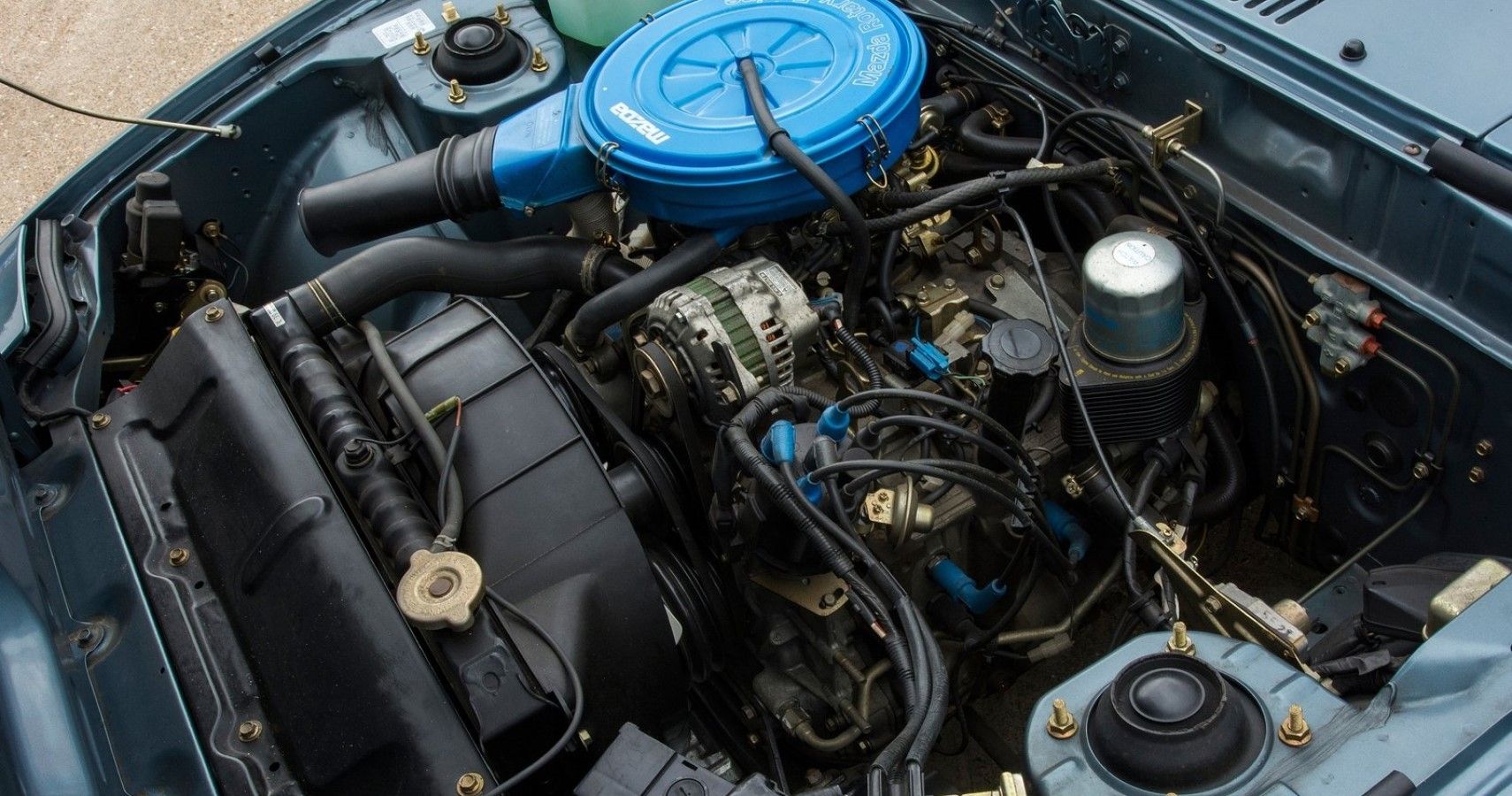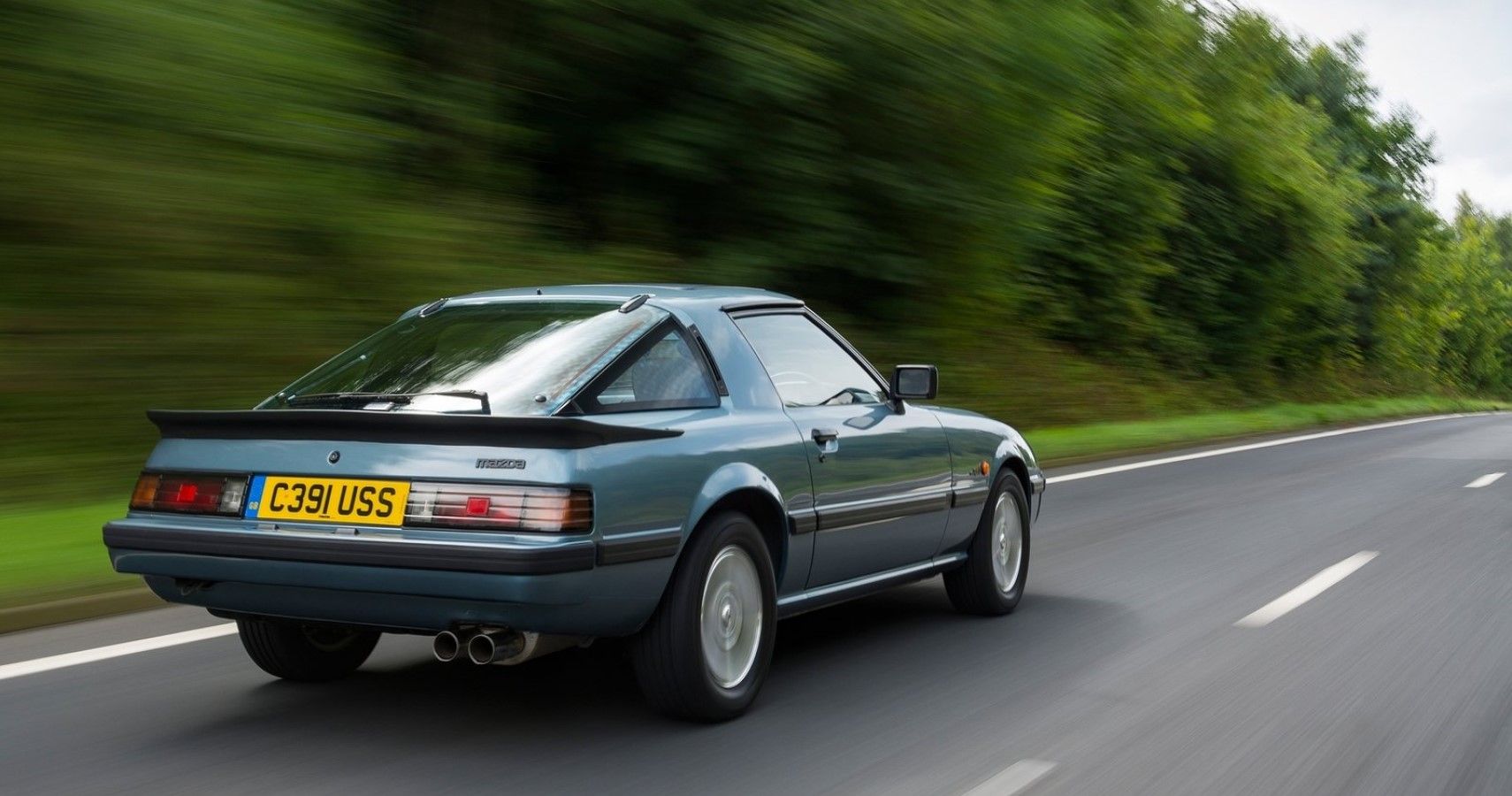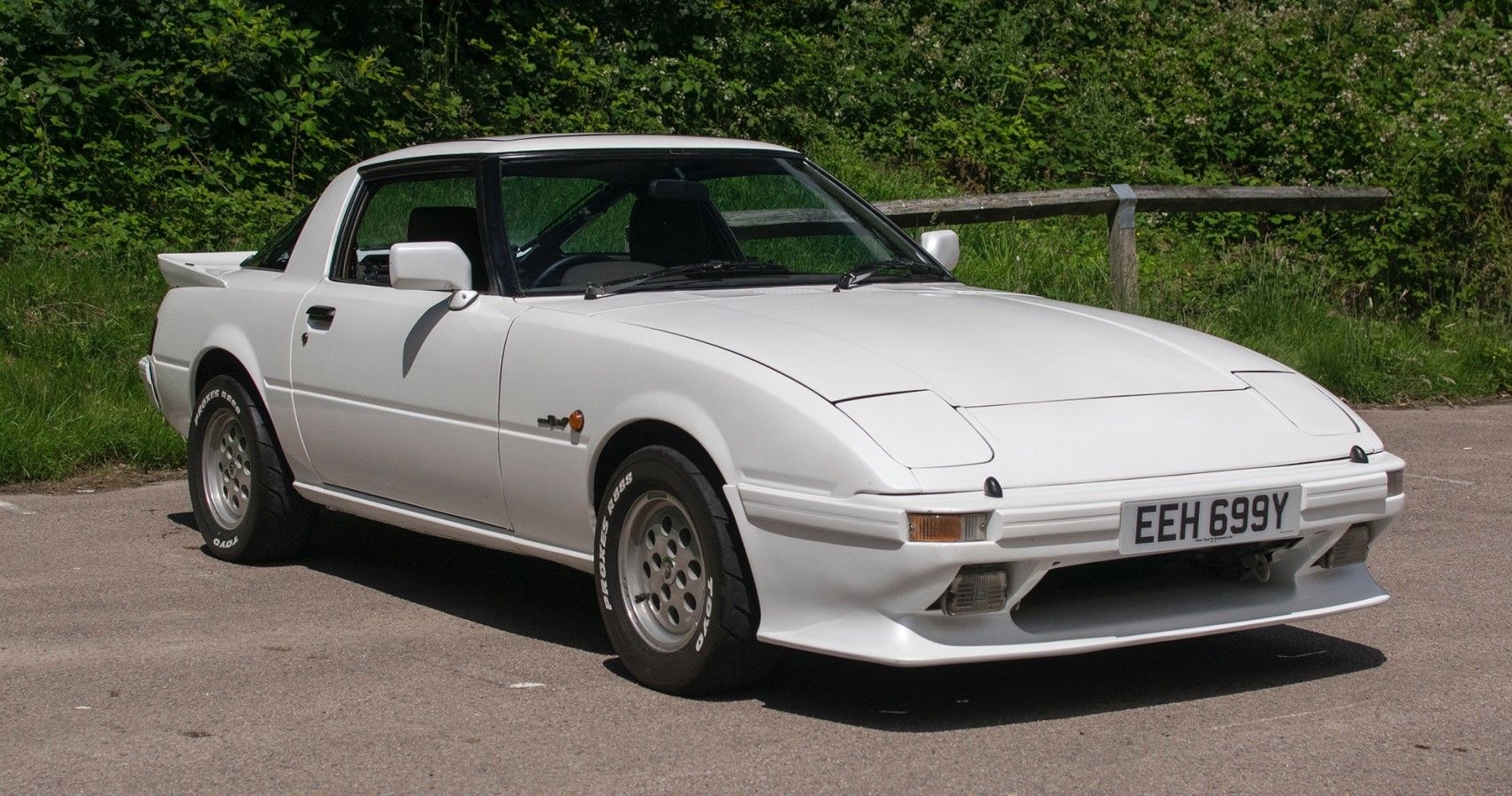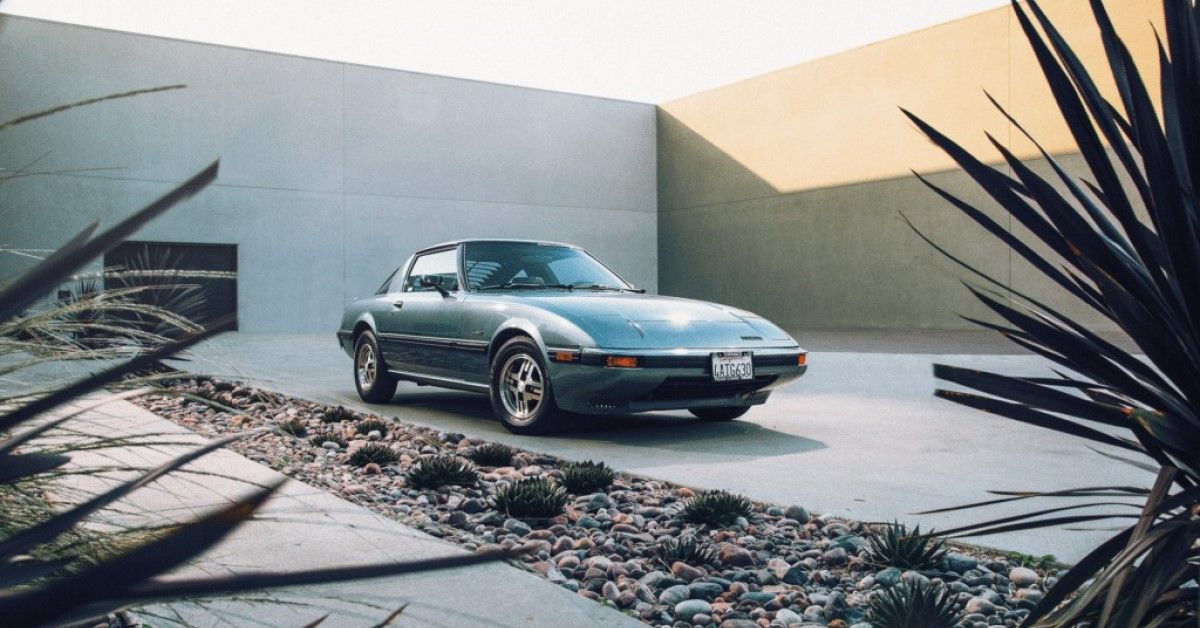Thanks to the adrenaline-pumping anime series Initial-D and the Fast and Furious franchise, JDM machines shot up in fame steeply during the early 2000s. The likes of Nissan GT-Rs, Mitsubishi Lancer EVOs, Subaru STIs, and braapy Mazda RX-7s were all getting a lot of attention. But things were different for Mazda as only the RX-7 FD was gaining all the fame, while it wasn't confined to just one generation for the others.
But the foundation for this high-revving rotary sports car was laid back in 1978 with the first-generation Mazda RX-7 FB. Shockingly, not many know about this wonderfully underappreciated sports car of the 80s. It was a two-door wedgy coupe that started with a humble 100 hp rotary heart but eventually grew up to be a 163 hp turbo monster before winding things up and transferring the baton to the second-gen Mazda RX-7 FC. Mazda previously did try to woo people with the first twin-rotary-powered car - the Cosmo 110S, and the retro-vibing RX-3, but neither of them clicked.
But the RX-7 FB was an instant success and its success lies in a simple formula of pure and unadulterated driving pleasure. The first-gen RX-7 showed us that you don't need a big engine and an intimidating stance to bring a wide grin to the driver's face. The RX-7 FB brought about a very interesting driving experience. The dynamics were wild and sensitive but at the same time, the cleverly designed chassis instilled surety and confidence in the driver. So technically, this rotary-powered car was drunk and sober at the same time.
We go head-over-heels for the FD Mazda RX-7, right? Well, then we should be thankful to the OG Mazda RX-7 FB that paved the path for rotary-powered madness.
When Cheap Sports Cars Were Going Extinct, Mazda Came In With A Savior
The 1960s and early 1970s were a vibrant time with cars like the Alfa Romeo Spider, MG B, Shelby Mustang GT350 and Datsun 240Z sending shockwaves across the automotive landscape. But by the late '70s these exciting sports cars were either gone or, as in the case of the Datsun (by that time the 280ZX) not as much fun as they used to be. And that's when Mazda came out with the first-generation RX-7.
The first-gen RX-7 is generally denoted as FB as stated earlier, but there are two sides to that story. The early iterations from 1979 and 1980 were called SA RX-7. For 1981 the RX07 got a sleeker look with its smoothly integrated bumpers, body side molding and taillights. Minor tweaks to the engine controls made for smoother operation. But either way, the first-gen RX-7 was an all-new take on sports cars that was light, nimble, and capable of putting a wide grin on the driver's face.
Mazda RX-7 FB With Its Peppy Rotary Engine Showed Us That Tiny Is Fun
Initially, the Mazda RX-7 first-gen came with a humble 1.1-Liter twin-rotary motor that churned out 100 hp and 105 lb-ft of torque. Power was sent to the rear wheels via a standard four-speed manual gearbox (with an optional five-speed manual and a three-speed auto).
Its performance was acceptable for the time, but the fun quotient was dialed up with its low curb weight of 2,350 pounds. This helped the RX-7 do 60 mph in less than 10 seconds which was respectable for the time. While this model was exciting enough, the RX-7 FB came forth in its full glory at the end of its run, as the RX-7 got notable updates throughout its period.
In its prime, it packs a 1.3-Liter rotary motor churning out 135 hp and 133 lb-ft of torque. This motor came only in the flagship RX-7 trim which also got fuel injection that replaced the carburetors of the lower trim levels. But throughout the RX-7 first-gen's run time, Mazda proved time and again that tiny is fun.
The Mazda RX-7 FB Was Nimble, Balanced, And A Driver's Machine
The rotary engine is known for being lightweight and compact. This helped Mazda position the motor in RX-7 behind the front axle which gave it a golden 50:50 weight distribution. This meant that the RX-7 was a hoot to drive around winding roads and proved that a lot of power wasn't necessary to make a car fun.
The chassis was derived from the Mazda RX-3, but the suspension was all-new with a combination of MacPherson struts and springs up front and a Watts link for the rear live axle. This helped the Mazda stay put even through sharp corners and minimized body roll drastically.
The chassis and other components were also updated throughout the RX-7 FB's run time. In its prime, it got larger disc brakes on all four wheels and a low-mounted rear trailing arm set for improved handling. All of these bits gave the RX-7 FB a nimble and balanced character.
A Short-Lived Mazda RX-7 FB Savanna Only For Japan
At the end of the first-gen RX-7's runtime, Mazda introduced a turbocharged version but only for Japan. It was based on the 1.1-Liter rotary motor and churned out 163 hp which made it the most powerful factory RX-7 FB. Called the Savanna Turbo, it came with a newly developed turbo system that was made to tackle the uncertainties of rotaries.
Mazda RX-7 FB Is Slowly Getting Its Due Respect
The RX-7 FB was an impressive first-time effort by Mazda to redefine a sportscar. While the engine was tiny, the low curb weight and impressive handling characteristics made it a force to be reckoned with. While it might sound ironic, the first-gen RX-7 was also known to be a reliable machine.
Guess people were just getting to know of the "apex seals" nightmare! Jokes apart, the RX-7 FB is slowly getting the respect it deserves. While these cars aren't easy to find in nice condition without any mods or a ton of miles, they're out there, and you can typically get a good one for around $10,000 to $20,000, depending on mileage and how nice it is.
Source: Mazda

